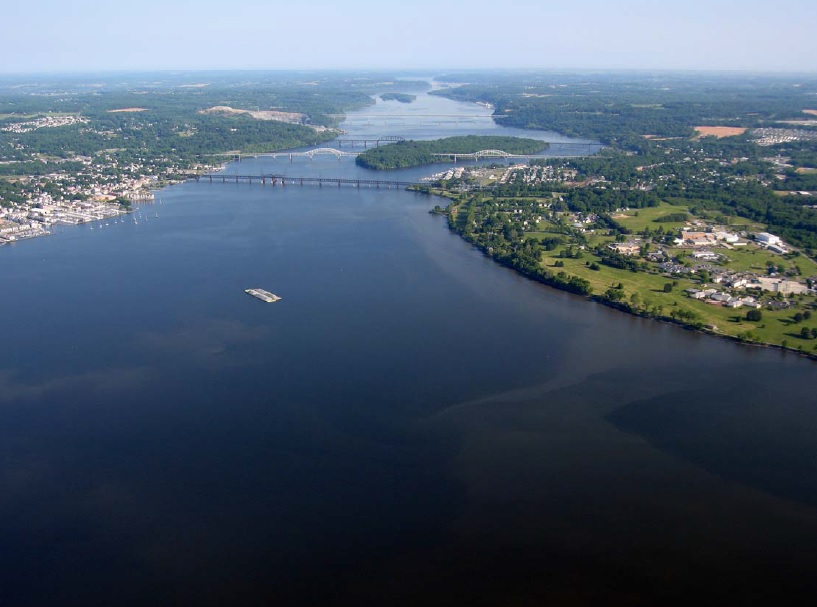By Kim Coble
Chesapeake Bay Foundation
via the Bay Journal News Service
At the recent annual meeting of the Chesapeake Bay Program leadership, there was much talk about the importance of restoring local rivers, streams and the Chesapeake Bay, but a shortage of commitment to specific actions that will get Bay restoration back on track.
And it is clearly off track.
After decades of failed Bay restoration efforts, there is now a Chesapeake Clean Water Blueprint. The Blueprint includes pollution limits, state-specific plans to achieve those limits with two-year milestones describing the actions each state will take, and the consequences that the Environmental Protection Agency said it would impose if the jurisdictions failed to take the actions they promised.
As part of the Blueprint, the Bay jurisdictions pledged to implement practices by 2017 that will result in a 60 percent reduction in pollution, but at the current pace it is estimated that they will miss that mark on nitrogen pollution by 50 percent. And 80 percent of that shortfall is from Pennsylvania.
That is unacceptable.
What Pa. needs to do
Gov. Tom Wolf inherited this problem, but the 2017 deadline will occur on his watch. At the meeting, John Quigley, the secretary of the Pennsylvania Department of Environmental Protection (DEP), did acknowledge that the commonwealth needs to “reboot” its restoration efforts, and the Chesapeake Bay Foundation (CBF) believes he intends to do that.
But the devil is in the details, and we are calling for Pennsylvania to lay out, in the next 30 days, a meaningful plan and timetable for implementation.
We are pleased that Pennsylvania recognizes that it needs to improve compliance with agricultural laws and regulations as well as modernizing record keeping and data collection. The commonwealth has some of the strongest regulations in the region for agriculture, but recent on-farm inspections by the EPA and DEP found only one in three farms in compliance. With current staffing, it would take DEP more than 150 years to inspect each farm in Pennsylvania’s Bay watershed once.
The CBF supports the call by Sens. Ben Cardin of Maryland and Robert Casey of Pennsylvania for the U.S. Department of Agriculture (USDA) to increase the technical and financial assistance to help farmers implement conservation practices that will reduce pollution.
Maryland and Virginia short of the mark
Maryland and Virginia are closer to being on track, but an assessment of the critical practices they have committed to implementing in their milestones finds progress short of the mark in those jurisdictions as well.
Virginia missed its target for both nitrogen and phosphorus from urban and suburban runoff. And because of changes in farming production and expected increases in Virginia’s poultry industry, the state might have to achieve additional reductions from agriculture.
Because Virginia’s plan calls for achieving 79 percent of its pollution reduction from agriculture, the CBF calls on the administration of Gov. Terry McAuliffe to ensure farmers across the state to fence livestock out of streams and plant trees to create streamside buffers. These and other proven conservation practices not only protect streams and rivers but also boost livestock health and farm bottom lines.
Virginia also must increase funding to help localities reduce polluted runoff from streets, parking lots, lawns and buildings. Urban and suburban runoff is among the few increasing sources of nitrogen and phosphorus pollution in Virginia.
With regards to nitrogen pollution, Maryland missed its 2014 milestone from both agriculture and urban/suburban runoff. The job will not get easier, as new information from the USDA agricultural census, population and land-use data put Maryland off track to meet its overall nitrogen goals. As in Virginia, polluted runoff from streets, rooftops and other impervious surfaces remains a pressing issue.
What EPA needs to do
EPA Administrator Gina McCarthy, who was also at that meeting, spoke of EPA’s support of the Blueprint, but refused to specify the actions the agency intends to take if the states fail to meet their commitments. If states fail to implement the plans each developed, EPA must impose consequences for failure. If not, we are at risk of yet another failed Bay agreement.
The leaders talked the talk; it is now time for them to walk the walk.
Kim Coble is a vice president at the Chesapeake Bay Foundation. Distributed by Bay Journal News Service.




Recent Comments